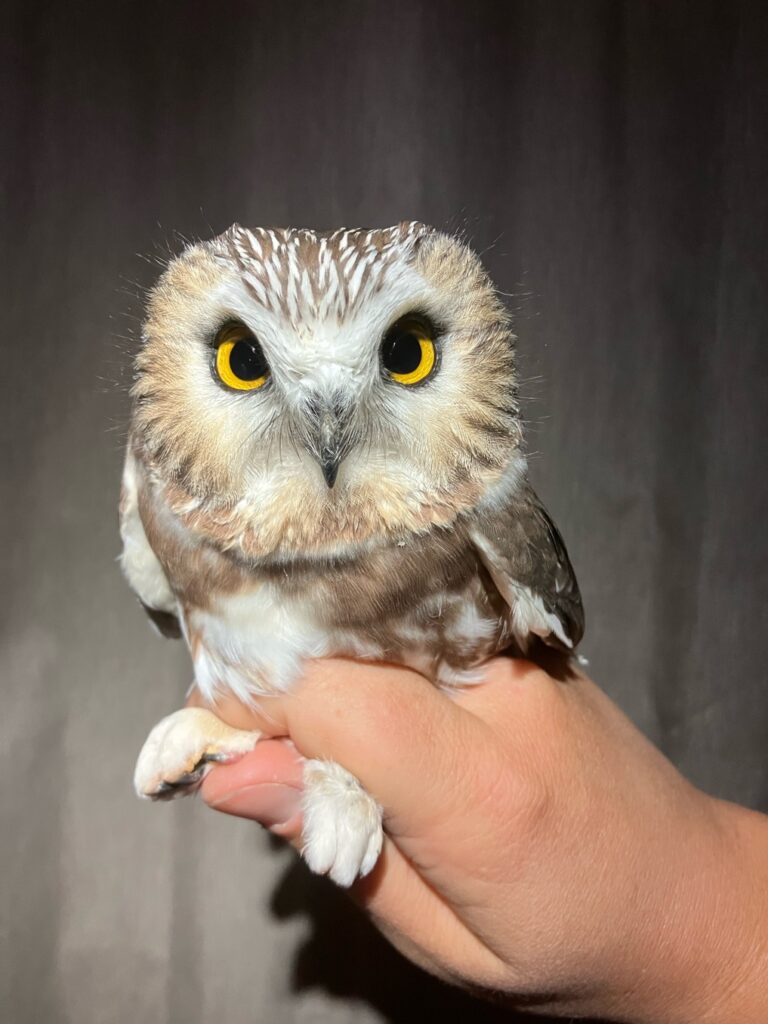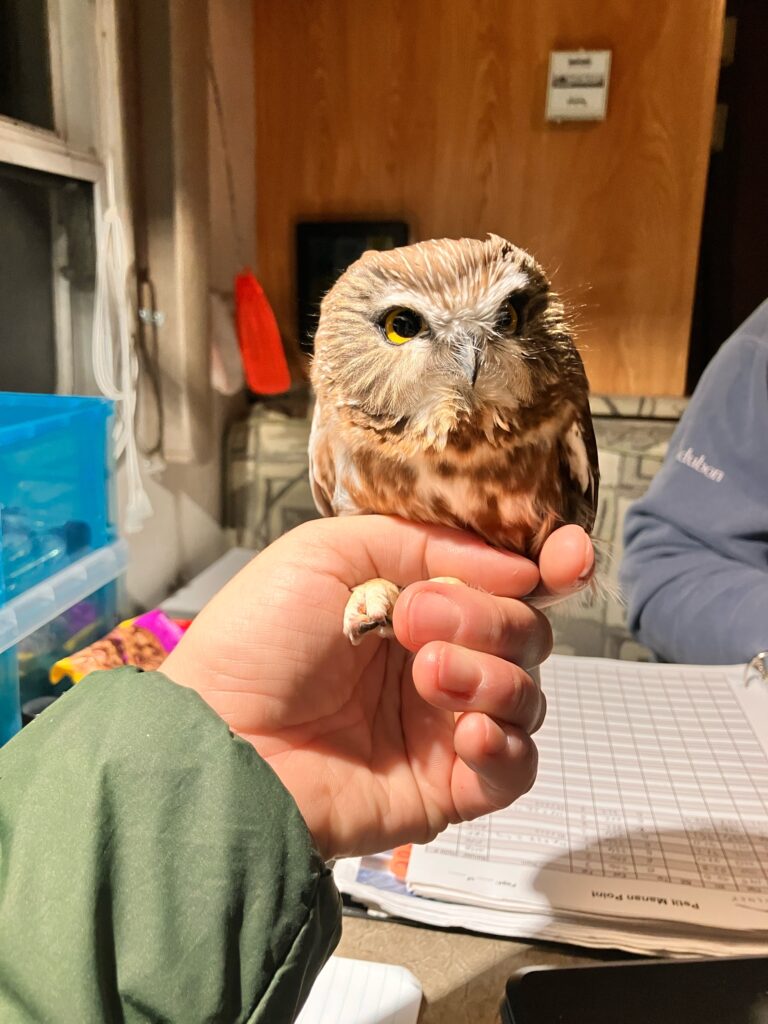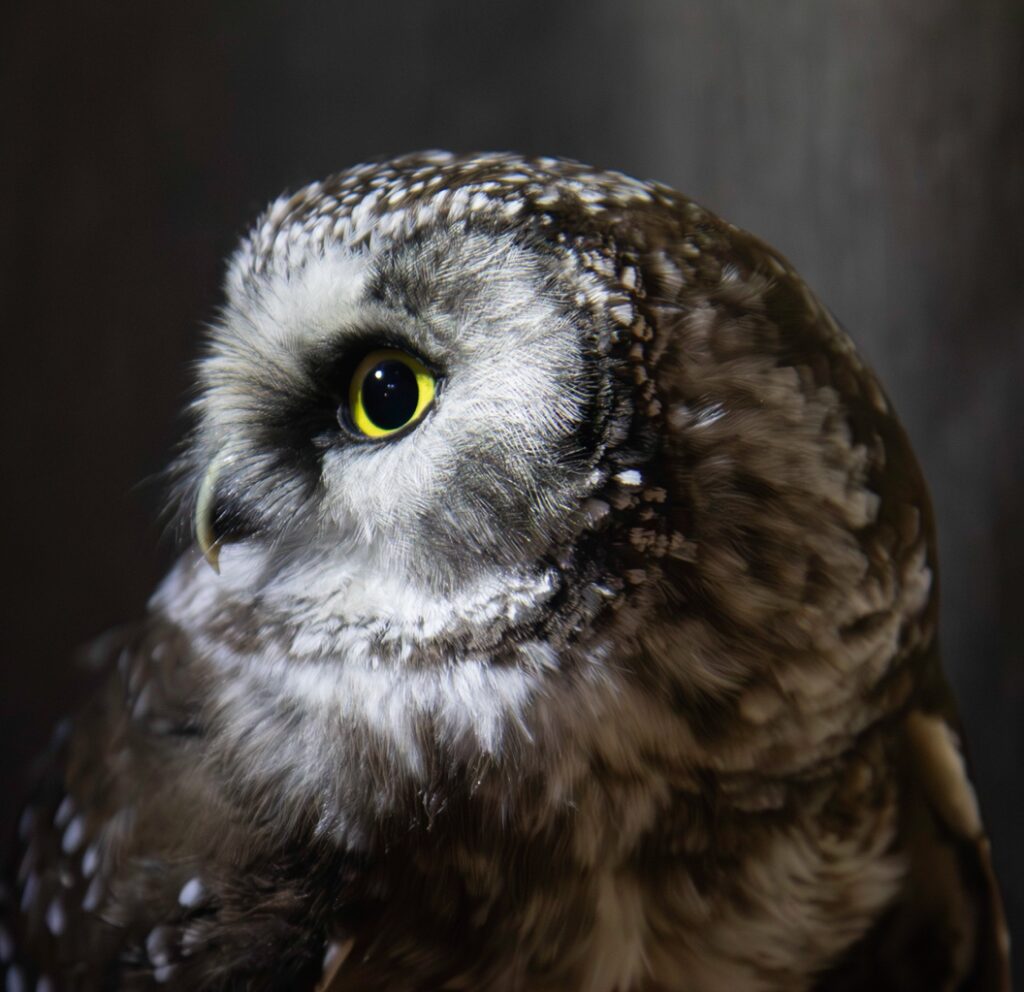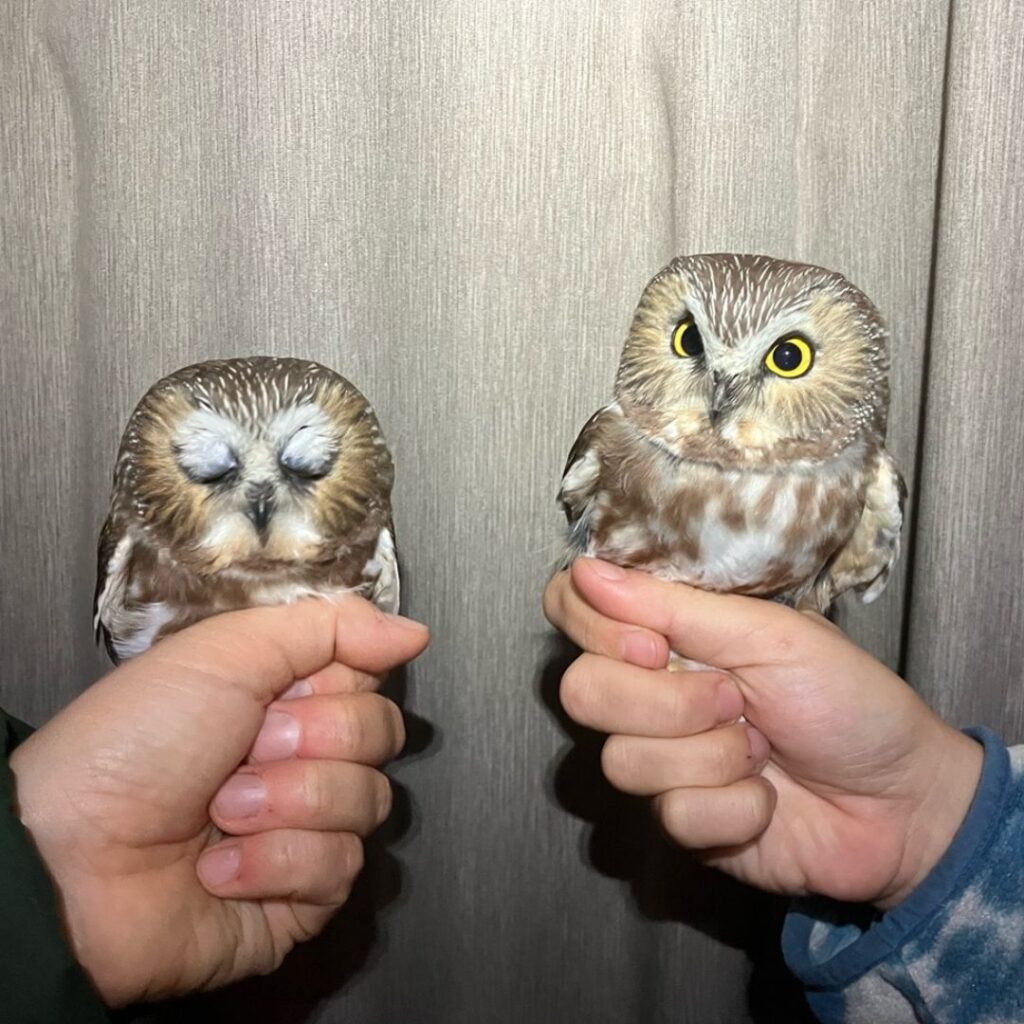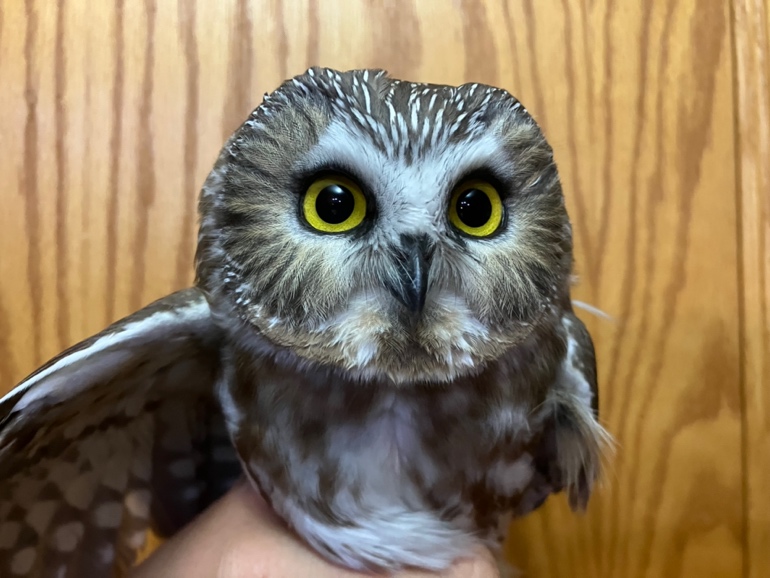13 October 2025
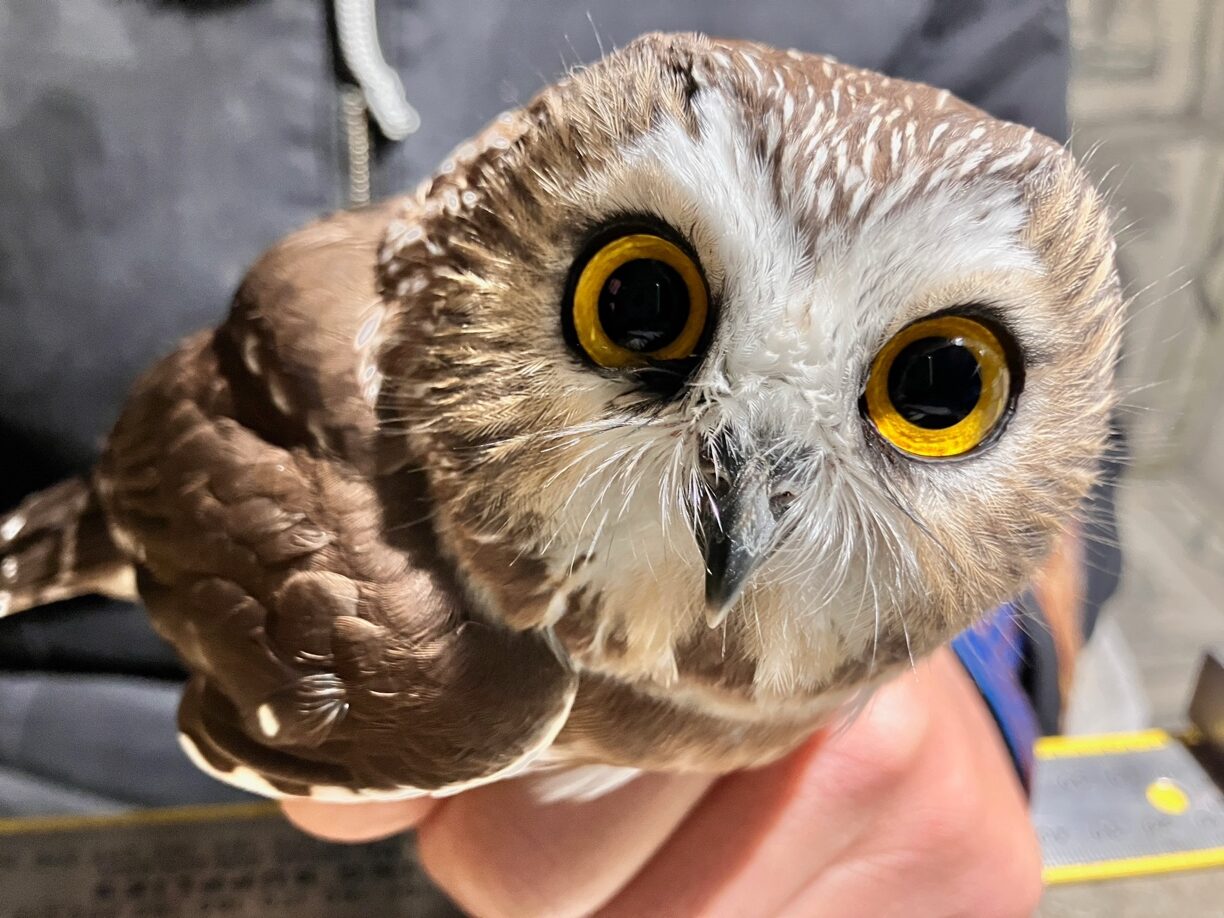
As the temperatures decline and more leaves fall from the trees, we have reached the halfway point of the Northern Saw-whet migration season. On nights with North winds, the light of our headlamp beams pick up the glitter of frost on the ground, and we have begun to open our mist-nets earlier and earlier, as the darkness encroaches on daylight. The cold and the dark tell us that we are entering the peak period of migration for our owls.
As of the thirteenth of October, we have caught 161 saw-whets. The owls have been showing up in good numbers as we wait at the nets, and this is the fourth-most birds that have been caught at this point in the season since mist-netting began in 2015. We had expected to see fewer owls in 2025 than last year, as we are now in the second year of the four-year saw-whet cycle. Over the summer, fewer chicks hatched, due to lower prey availability, giving us fewer hatch-year birds migrating over our point of land. We have seen the marks of this pattern play out, as we have captured a much higher proportion of adult birds compared to 2024, but we have also seen more birds than we had even hoped for by this point in the season! Of course, we do not yet know how the owls will continue to move throughout the rest of the season, or what our final number will be.
One of the most interesting aspects of returning to a project and a place is comparing your own experiences over time. These comparisons are what make long-term monitoring studies like Project Owlnet so important, and are also what keep us engaged and curious as the people who are staying up all night, trying to keep our hands warm enough to extract birds from the nets! There are a swarm of different conditions that can affect when the owls decide to take flight and where their migration path takes them, and we spend a lot of our time checking the weather conditions and staring up at the skies, trying to predict how many owls we will capture in a night.
As the smallest owl species in Eastern North America, with a delicate, fluttering flight style, saw-whets are particularly vulnerable to the whims of the weather. Saw-whet owls’ migration is affected by the period of the season, cloud cover, precipitation, wind speeds, wind direction, temperature, and moon phase. All of these different elements can have varying levels of influence over the birds. In the past week or so, we have seen examples of how different conditions can overlap or outweigh each other to give us busy or slow nights at the nets, and of how the mystery of their movements can remain even when we think we understand all of these conditions.
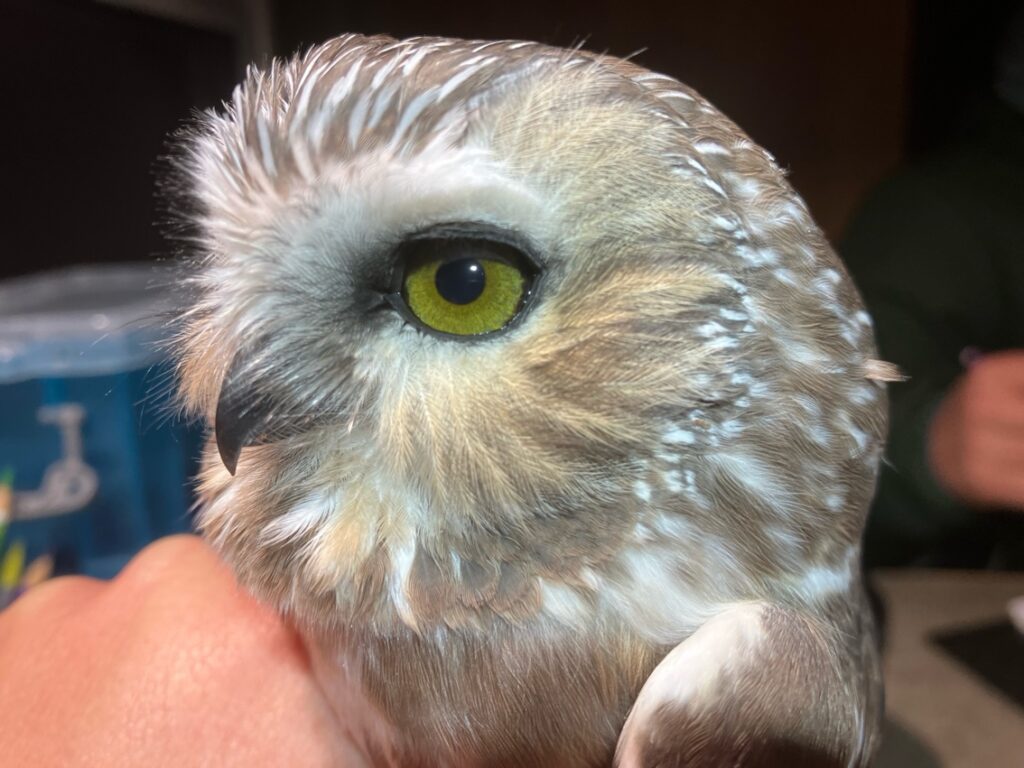
Owls tend to travel when skies are clear, the air is cool, and winds are low and steady, carrying them down to us from the Northwest. They also tend to avoid taking risks in the strong moonlight. These small owls are targets for predators, like much larger Barred Owls or Great-horned Owls. In the vivid silver light of a nearly full moon, they are less likely to drop out of the sky to investigate the calls we are playing on our audio lure. So, on the night of October 4th, when the winds were low and skies were clear, but the moon was getting closer to full, we caught just three owls. On next two nights, the winds blew harder, and came out of the Southeast, essentially creating a wall of wind that the owls did not want to fly into. We saw zero owls on both of these nights. On the 7th, when the moon was a full white disc, the winds were so strong that we did not even open the nets. On the 8th, conditions were looking better, and we knew that the owls had just experienced three nights in a row when they did not want to travel, so they had been waiting, held like a river behind a dam. We were right, to an extent! That night, we did catch birds, but only 7 individuals. The winds were perhaps a little strong from the North, and the moon was still very bright.
On the 9th of October, the dam finally broke. Despite the bright moonlight, the owls were not waiting any longer, and the winds were low from the Northwest under clear skies. The temperature dropped throughout the night, until the frost bloomed on the grass. We walked out to the nets just after full dark and found one owl caught in the nets. As we carefully extracted it, we heard two more birds hit the nets! The river of owls flowed throughout the night, peaking at around 11pm and continuing until 4am, when we pulled the last six birds out of the nets before finally closing them down. We ended the night, or rather the morning, with 52 birds who had passed through our hands, gotten banded and measured, and released back to the skies! The next night was once again too windy to safely open the nets, and the winds likely held any owls back as well. By the 11th, the power of the moonlight was waning, the stars were glinting, and while the winds were a bit directionally scattered, they were mostly from the North and mostly very low. We were not quite sure what to expect, but once again the river flowed across the sky, and owl after owl landed in the nets. By the end of the night, we had added another 30 birds to our total. On the 12th, the winds were almost too high, and the sky was clouded over. Our expectation of low numbers was borne out, as we caught just 4 birds, giving us our current number of 161 captured saw-whets. Even having caught well over a hundred owls, we are still awed by each one that we get to hold in our hands. We especially love to release them, wild birds who may not be touched or even seen by another human again in their lives. After completing all of our measurements, we walk them away from the bright lights of our trailer, illuminated only by the red light setting of our headlamps. We place them on our open hands, to let them stand and adjust their eyes to the darkness. We get to watch them tip their faces up to the sky, turning their heads back and forth to orient themselves with their huge eyes, before they crouch slightly, open their wings, and fly up into the velvet night.
- Coco and Tracey Faber
